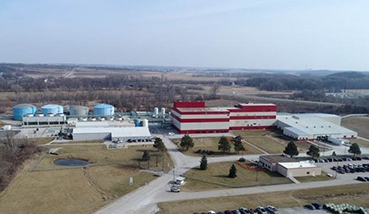
According to an October 15th article in Newsweek, analysis conducted by Consumer Reports on five years of data collected by the Department of Agriculture uncovered traces of more than 450 different pesticides in fruits and vegetables. Some of the residues exceeded what CR considers a “potentially harmful threshold.”
Why, you might ask, would someone who publishes a blog focused on the hazards of Manufactured free Glutamic acid (MfG) in food suddenly be talking about the hazards of pesticides? Unless, of course, some pesticides contain MfG.
Enter a product called AuxiGro. In 1998, Auxein Corporation had applied and was granted permission to spray unregulated amounts of monosodium glutamate combined with MfG from other sources on agricultural products.
The free glutamate components of MSG and every other flavor-enhancer and protein substitute are excitotoxic – brain damaging — amino acids, known to cause migraine headache, fibromyalgia, asthma, heart irregularities, seizures and more.
We learned of AuxiGro in a curious way. In the late 1990s, an MSG-sensitive friend reported that after eating potatoes (in addition to her otherwise standard diet) she’d had an MSG reaction. Another friend independently told the same story, but his story was about lettuce. What did husband Jack and I believe? Our friends had gone off the deep end, that’s what we believed. Maybe too much MSG had gotten to them.
Then came the information that MSG was being sprayed on crops. Two of the crops that had been used in field tests and then brought to market (prior to approval) were lettuce and potatoes. This told us that monosodium glutamate sprayed on crops could cause adverse reactions in MSG-sensitive people who ate those crops.
Not long after AuxiGro was approved for use, Auxein Corporation applied to the National Organic Standards Board (NOSB) for organic certification. The independently owned and operated Organic Materials Review Institute (OMRI) was in charge of the approval process. When Jack made his presentation to the NOSB, the OMRI report recommending approval was already in the hands of NOSB board members. Based on Jack’s presentation which included demonstration of the fact that AuxiGro was a synthetic product, the board denied approval of AuxiGro and L-glutamic acid for use in organic foods.
When the NOSB rejected the application, we assumed that OMRI would cancel its relationship with AuxiGro. We found, however, that OMRI merely tabled the issue, suggesting to us that they would try again sometime in the future to have AuxiGro approved for use as an organic fertilizer.
During the course of various discussions, we learned that OMRI charged a fee to any company submitting a product for its review prior to receiving an OMRI recommendation to have the product added to the NOSB list of approved organic products. We also learned that if a product was approved, the producing company would pay OMRI an annual fee as long as the product remained approved. If there was no NOSB approval, there would be no annual fees paid to OMRI. Conflict of interest?
AuxiGro came to our attention because it contains MSG. And although to the best of our knowledge that product is no longer sold and used in the U.S., there are a myriad of fertilizers, pesticides, and plant growth enhancers that contain excitotoxic MfG just as MSG does. There will be no information about these toxic chemicals on ingredient labels – or anywhere else on a product label for that matter. But the fruits, grains and vegetables treated with these chemicals will have absorbed them, and will pass them on to the people who consume them.

